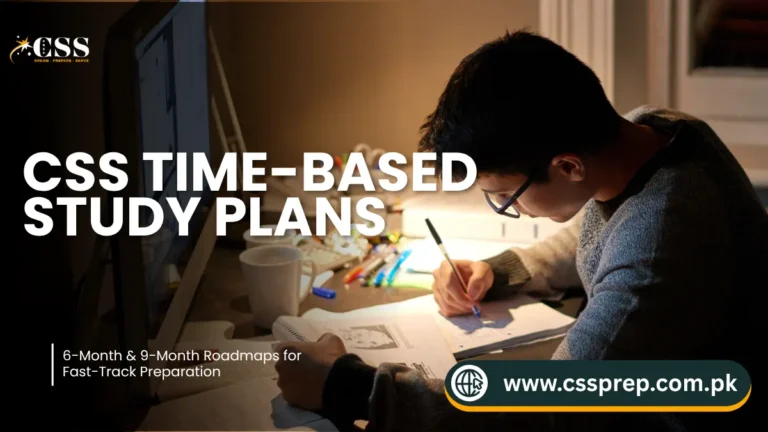CSS Essay Tricks: The Proven 4-Step Strategy to Score 60+ (FPSC Focus)
Introduction: Why the CSS Essay is the Real Hurdle
The CSS Essay paper is perhaps the single most unpredictable hurdle in the entire competitive examination. Statistics show that the highest number of failures occur in this paper, not because aspirants lack knowledge, but because they fail to master structure, coherence, and technique.
This guide reveals proven Essay Writing Techniques for CSS candidates, focusing on a strategic approach designed to meet the strict expectations of the Federal Public Service Commission (FPSC). Your goal isn’t just to pass; it’s to deploy a flawless High-Scoring Essay Structure to confidently secure 60+ marks.
Phase 1: The Blueprint – Crafting the Perfect Outline
Before writing a single word of your essay, you must allocate 40 minutes to planning. This disciplined time management is the first and most crucial of all CSS Essay Tricks.
The Master Essay Outline for CSS
Your outline is the skeletal structure that ensures coherence. It must be detailed, spanning at least 2 pages.
- Introduction (1 Paragraph): Define the scope, introduce key terms, and end with the Thesis Statement.
- Body Paragraphs (10–12): Each paragraph must cover a single, distinct point. Divide your body into logical sections (Causes, Effects, Solutions, Recommendations, etc.).
- Conclusion (1 Paragraph): Summarize the arguments and provide a final thought.
Phase 2: The First Impression – Writing the Flawless Introduction
The introduction is where the examiner decides if your essay is worth a qualifying score. Don’t waste time with philosophical jargon; be direct and purposeful.
Technique 1: The Funnel Approach and Hook
Start with a general statement, narrow down to the topic, and end with your main argument.
- Hook: Start with a relevant quote, a recent statistic, or a universal truth related to the topic.
- Context: Define the key terms of the essay prompt.
- Problem Statement: Briefly state the core conflict or issue the essay addresses.
Technique 2: The Powerful Thesis Statement for Essay (The Single Most Important Trick)
Your thesis statement must be the last sentence of your introduction. It is the one-sentence summary of your entire argument and the roadmap for your examiner.
- Rule: It must be assertive, not a question. It must clearly state what you intend to prove.
- Example: Instead of asking, “Should democracy be promoted?” assert: “Due to political instability, economic stagnation, and social fragmentation, the immediate promotion of democracy in Pakistan is contingent upon institutional reform and political maturity.”
Phase 3: Building Coherence – Mastering the Body Paragraph Structure
The body is where you present evidence to support your thesis. Examiners look for seamless flow and logical progression.
Technique 3: The T-E-E-C Method (For Every Paragraph)
Each of your 10–12 body paragraphs should adhere to this four-part structure:
- T (Topic Sentence): The very first sentence. It must directly state the paragraph’s main idea and act as a sub-argument supporting your thesis.
- E (Explanation): Elaborate on the Topic Sentence, explaining how or why it is true.
- E (Evidence/Example): Introduce data, statistics, reports, or expert opinions to back up your claim (e.g., citing UN reports, economic surveys, or historical facts).
- C (Concluding/Transition Sentence): Summarize the paragraph’s point and smoothly transition to the idea in the next paragraph.
Technique 4: The Art of Linking (Transitioning)
Use effective transition words and phrases at the start of each paragraph to maintain flow. Words like Furthermore, Moreover, Consequently, Conversely, and In conclusion are essential CSS Essay Tricks that signal coherence to the examiner.
Phase 4: The Final Touch – Executing the Perfect Conclusion
The conclusion is your last chance to impress. It should not introduce new points.
Technique 5: The “Reverse Funnel” Essay Conclusion Trick
- Restate the Thesis: Begin by summarizing your original thesis statement using completely different vocabulary.
- Brief Synthesis: Concisely restate the main arguments (one sentence per major body section).
- Final Recommendation/Prediction: End with a strong, forward-looking thought, recommendation, or prediction that leaves a powerful, memorable impression on the examiner.
Essential FPSC Essay Strategy & Time Management
| Phase | Recommended Time | Task Goal |
| I. Planning | 40 Minutes | Brainstorming, selecting the topic, and writing the 2-page Essay Outline for CSS. |
| II. Writing | 2 Hours 20 Minutes | Writing the Introduction, Body, and Conclusion (must average 12–15 minutes per page). |
| III. Review | 20 Minutes | Final check for grammatical errors, spelling, punctuation, and ensuring word count is met. |
Success in the CSS Essay requires consistent practice of these structured Essay Writing Techniques for CSS. Start applying them to previous FPSC Essay Strategy papers immediately.







